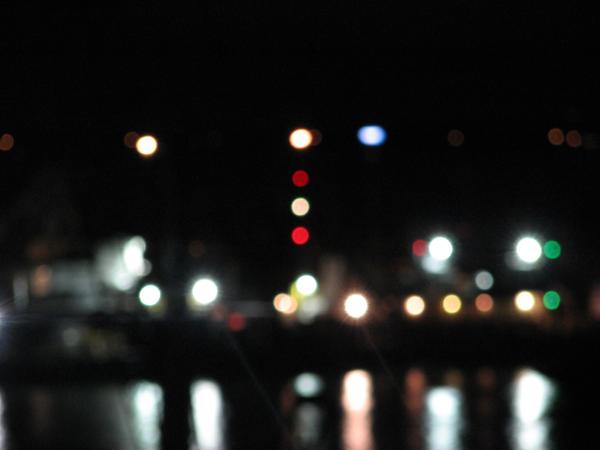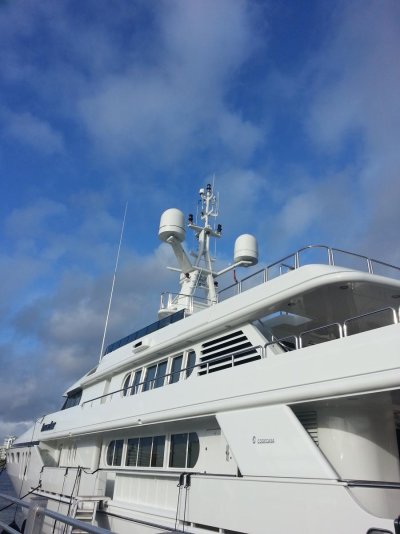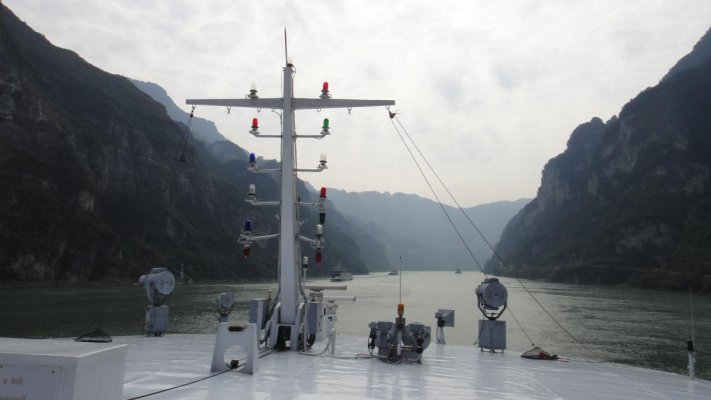You are using an out of date browser. It may not display this or other websites correctly.
You should upgrade or use an alternative browser.
You should upgrade or use an alternative browser.
Why all the red lights?
- Thread starter Hawgwash
- Start date
The friendliest place on the web for anyone who enjoys boating.
If you have answers, please help by responding to the unanswered posts.
If you have answers, please help by responding to the unanswered posts.
skipperdude
Guru
Red over red
The captain is dead.
Vessel not under command.
That's the only one I could think of
The captain is dead.
Vessel not under command.
That's the only one I could think of
Ya know Murray, when I posted that, the original title was "Is this a floating cat house?"Brothel?
I changed it just to see who would come up with that first. Then I realized the rest of the country is in bed and since Xsbank has no sense of humour it would have to be you, Al or maybe the Spy Guy. All of you being such good clean livers and all.
Last edited:
raymond.goff
Veteran Member
As far as I can tell from here, http://www.bosunsmate.org/seamanship/lights.php
It gets really complicated on bigger boats. Look,toward bottom of section.
Sent from my iPad using Trawler Forum
Raymond Goff
1978 Marine Trader 34
Www.libertytrawler.com
It gets really complicated on bigger boats. Look,toward bottom of section.
Sent from my iPad using Trawler Forum
Raymond Goff
1978 Marine Trader 34
Www.libertytrawler.com
Friend of mine fitted up an old 80' fishboat as a recreational boat. He wanted CSI rating to do some chartering, and ended up with all those doubled up lights, higher railings, etc. You need to carry the code book to work out what it all means.
raymond.goff
Veteran Member
My interpretation of all those lights...Steer away if at all possible....
Gives me a headache. Like lookin' at a bowl of Smarties in the sky.raymond.goff said:As far as I can tell from here
http://www.bosunsmate.org/seamanship/lights.php
It gets really complicated on bigger boats. Look toward bottom of section.
I thought the same as raymond.goff; anyone who advertises they may run over things needs a wide berth.HiDHo said:Vertical red lights used for signaling Vessel aground, restricted maneuvering, constrained by draft.
With so many variations it's easy to misread. By the time you done figgered out what's goin' on it's too late.koliver said:Friend of mine fitted up an old 80' fishboat as a recreational boat. He wanted CSI rating to do some chartering, and ended up with all those doubled up lights, higher railings, etc. You need to carry the code book to work out what it all means.
Attachments
psneeld
Guru
Those light g pictures are only from one angle...it's the lights and sequence that is important.
Take a US captains course and you will have them all memorized for at least a short amount of time.
Teach a course and most stay with you always.
Take a US captains course and you will have them all memorized for at least a short amount of time.
Teach a course and most stay with you always.
Ok, so here's another angle; I did do a walk around. Still no yellow and at least in daylight, I can't make a sequence fit any scenarios here Illustrated Navigation Lightspsneeld said:Those light g pictures are only from one angle...it's the lights and sequence that is important.
As K Oliver says, you need the book in hand or talk it through with the captain when actually lit.
As far as teaching = remembering; I can't count how many times I taught "correcting/uncorrecting the compass" and I'm still lost with TVMDC, east is least bla bla. But then the 60s and all that that entailed, is paying my brain cells back now.
Attachments
Last edited:
The same was said by refugio but the argument to that is; none of them are sector (112.5*) lights. They are all-around.There is so little vertical separation...therefore I vote on "back-up" or redundant lights.
Boat name is Invader so maybe that tells us something.
No I doubt that is the case as I'm guessing the highest point would be a red not clear light.??Some yachts need anti collision lights if the mast is tall enough and near a flight path of aircraft.
This one doest look like one but can't really say.
LowNSlow77
Senior Member
Boat name is Invader so maybe that tells us something.
Ahh Invader. One of my least favourite visitors to the local waters. It came to the north end of Indian Arm last summer, I assume for the peace and quiet, and then opened the garage and winched out jet skis that spent the afternoon screaming around wave jumping. I had always thought the speed restrictions applied to all watercraft, but I guess if you are rich enough...
No Mast
Guru
Some yachts need anti collision lights if the mast is tall enough and near a flight path of aircraft.
Now that is a 1st world problem right there folks.
Gives me a headache. Like lookin' at a bowl of Smarties in the sky.I thought the same as raymond.goff; anyone who advertises they may run over things needs a wide berth.With so many variations it's easy to misread. By the time you done figgered out what's goin' on it's too late.
That graphic is easy! Restricted in Ability to Maneuver (Red / White / Red). Two side lights (red and green) of course. Two forward masthead lights = Towing. Double red and green show which side the obstruction is on, and which side is safe to pass.
At night, with nothing visible but these lights, I'd know in an instant exactly what was dead ahead of me. Some sort of dredge or other RAM at work. I'd give way (unless I was NUC) and pass on the green side.
In real life, it can be a little more difficult, looking at a different angle, with shore lights and work lights in the picture, but you can still figure out what's going on if you know your lights:

Last edited:
psneeld
Guru
not necessarily as the anchor light is often thought to be the highest and the red lights don't have to be.No I doubt that is the case as I'm guessing the highest point would be a red not clear light.??
So far all reds don't make any sense anyhow.....with a clear pic with accurate color... I probably could offer a decent guess but for now...all those reds don't make a lick of sense other than anticollision.
That type of vessel would never be RAM unless landing a helo. So reds for NUC, and aground would be required....probably never CBD too.
Last edited:
Tad Roberts
Guru
The double lights are just built in redundancy, required for commercial (Charter) vessels. They also have a full alarm panel in the pilothouse to indicate when one of those lights goes out.
High Wire
Guru
My guess is the mast is too thick to allow the 360 degree lights to show within the allowable obstruction limitations in the NavRules Annex I:
(b) (i) All-round lights shall be so located as not to be obscured by masts,
topmasts or structures within angular sectors of more than 6°, except
anchor lights prescribed in Rule 30, which need not be placed at an
impracticable height above the hull.
(ii) If it is impracticable to comply with paragraph (b)(i) of this section by
exhibiting only one all-round light, two all-round lights shall be used
suitably positioned or screened so that they appear, as far as practicable, as
one light at a distance of one mile.
(b) (i) All-round lights shall be so located as not to be obscured by masts,
topmasts or structures within angular sectors of more than 6°, except
anchor lights prescribed in Rule 30, which need not be placed at an
impracticable height above the hull.
(ii) If it is impracticable to comply with paragraph (b)(i) of this section by
exhibiting only one all-round light, two all-round lights shall be used
suitably positioned or screened so that they appear, as far as practicable, as
one light at a distance of one mile.
Sailor of Fortune
Guru
Tad has it correct. The one thing not mentioned is the "Fueling" light. Bravo flag (red flag) during daylight hours and all around red after dark while taking or transferring bunkers(fueling)
FF
Guru
- Joined
- Oct 12, 2007
- Messages
- 22,552
I would assume the multiple lights are to make operation easier.
No needed to know what the legal light system requires if a switch is simply Anchor, or Underway , or Towing., and turns on the correct set of lights.
The switch wiring is easier , with multiple lamps.
KISS
No needed to know what the legal light system requires if a switch is simply Anchor, or Underway , or Towing., and turns on the correct set of lights.
The switch wiring is easier , with multiple lamps.
KISS
Tad has it correct. The one thing not mentioned is the "Fueling" light. Bravo flag (red flag) during daylight hours and all around red after dark while taking or transferring bunkers(fueling)
Good point, the red flag and red flashing light are internationally recognized as meaning "transferring hazardous cargo". But I've never seen reference to them in the COLREGs or inland navigation rules. Unless someone can point me to what I'm missing, I suspect they must be in some other regulation, because tankers all use them when loading and unloading.
Similar threads
- Replies
- 7
- Views
- 549





